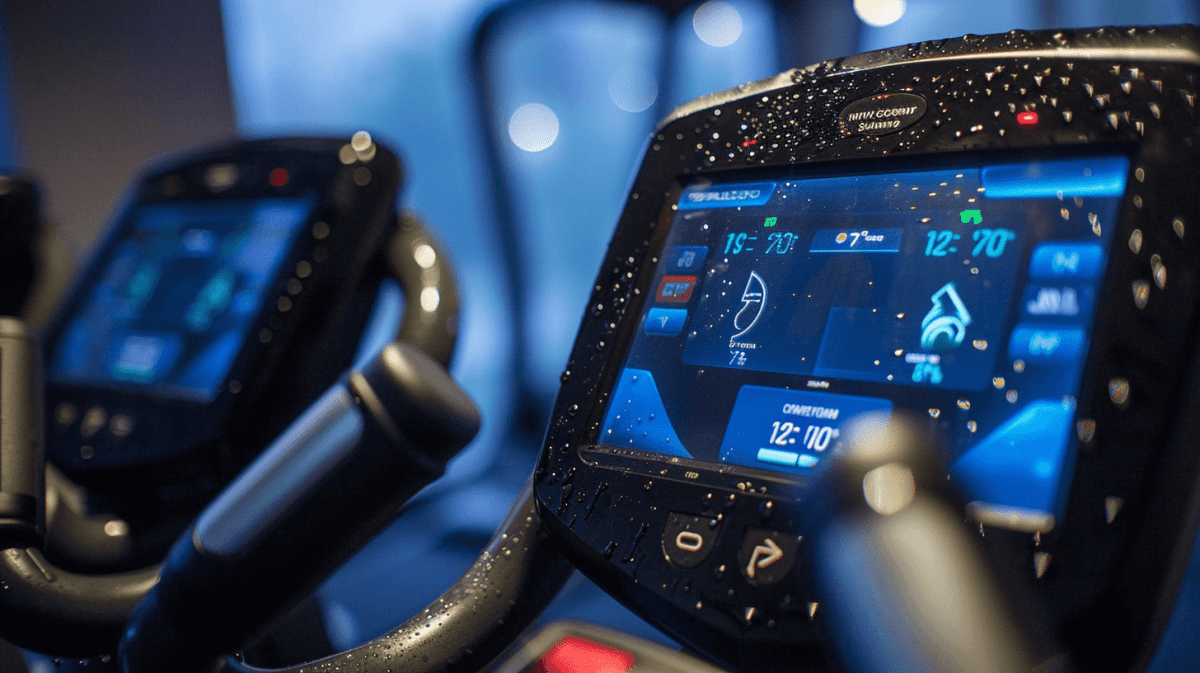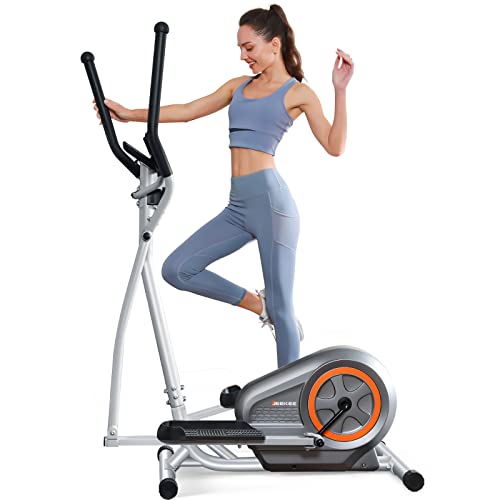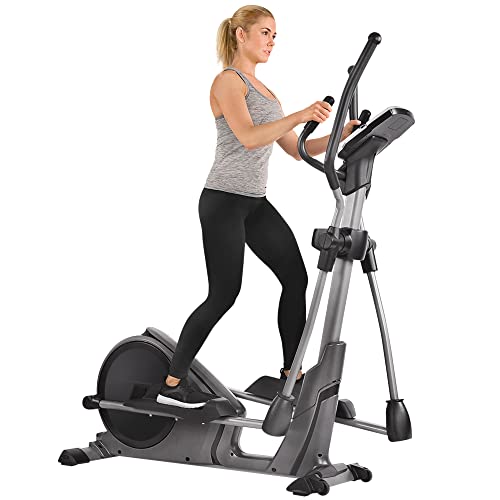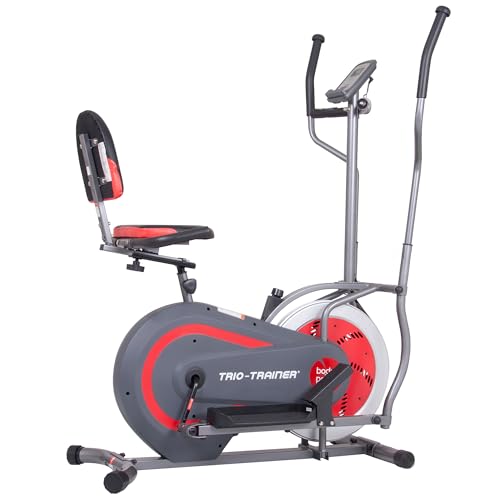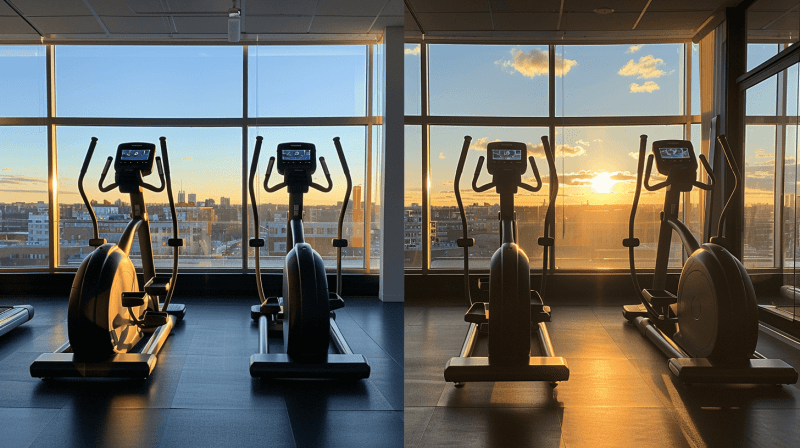If you've ever wondered whether your elliptical workout matches up to your outdoor walking routine, you're not alone. The fitness industry has created confusion by promoting elliptical distances as equivalent to real-world miles, but the truth isn't quite that simple. While both activities can help you reach your fitness goals, they differ in fundamental ways that affect how your body moves and how many calories you burn. Before you count that 30-minute elliptical session as your daily mile, you'll want to understand the key differences between these two forms of exercise and how they impact your overall fitness journey.
Key Takeaways
-
A mile on an elliptical is not directly comparable to walking due to varying stride lengths and resistance settings between machines.
-
Walking requires roughly 2,000 steps per mile, while elliptical strides are longer and count as two walking steps each.
-
Elliptical machines provide 35% less joint impact than walking, making them ideal for low-impact cardiovascular exercise.
-
Ellipticals burn approximately 16% more calories per hour compared to walking, offering greater potential for weight loss.
-
Distance measurements on ellipticals are calculated estimates, while walking distance represents actual ground covered in the physical world.
Understanding SPM and RPM Measurements
Exercise metrics can be confusing when comparing different machines and activities. When you're using elliptical machines, you'll encounter two primary measurements: Steps Per Minute (SPM) and Revolutions Per Minute (RPM), which help track your workout intensity and progress.
Your SPM represents how many steps you complete in one minute, while RPM measures how many full rotations your feet make in the same timeframe. To ascertain your actual distance, you'll need to ponder your stride length, which varies between different elliptical models and can be adjusted on some machines. The average stride length ranges from 16 to 22 inches.
Understanding these measurements helps you track your progress more accurately. For instance, if you maintain 120 SPM with a 20-inch stride length, you'll cover more distance than someone working at the same SPM with an 18-inch stride. When you're comparing your elliptical workout to walking, remember that the relationship between SPM, RPM, and stride length determines your actual distance covered. Most elliptical machines will automatically calculate your distance based on these factors, displaying results in miles or kilometers. For optimal cardiovascular benefits, try incorporating interval training techniques by alternating between moderate and recovery periods during your workout.
Calculating True Elliptical Distance
While understanding SPM and RPM provides a foundation for tracking your elliptical workout, accurately calculating the true distance covered requires a bit more math. Your elliptical's stride length plays an essential role in determining how far you've actually traveled, with most machines featuring lengths between 14 and 22 inches.
To calculate your true distance traveled, you'll need to consider several key factors:
- Your elliptical's specific stride length measurement
- The total number of RPM completed during your workout
- The duration of your exercise session
- Whether your machine has adjustable foot pads that modify stride length
Many elliptical machines display distance readings that aren't completely accurate, which is why performing your own calculations can give you better results. You'll find that shorter stride lengths require more revolutions to cover the same distance compared to machines with longer strides. If your elliptical has adjustable foot pads, remember that changing the stride length will affect not only your distance calculations but also which muscle groups you're targeting during your workout. Premium models like the NordicTrack Commercial 14.9 offer adjustable stride lengths from 17.5 to 18.7 inches to accommodate users of different heights.
Converting Steps to Strides
Understanding an elliptical's step-to-stride conversion helps you accurately track your daily activity goals. When you're working out on an elliptical, you'll need to know that one elliptical stride equals approximately two walking steps, which is vital for proper activity tracking.
To convert your elliptical workout into walking-equivalent steps, you can use a simple multiplication method. Multiply your total elliptical minutes by 203 to determine your approximate walking-equivalent steps. For example, if you spend 30 minutes on the elliptical, you'll accumulate about 6,090 walking-equivalent steps.
It's important to note that elliptical stride length typically differs from natural walking or running strides. The machine's design creates a more compact movement pattern, which affects how your steps are counted. When you're tracking your daily activity, remember this difference to avoid underestimating or overestimating your total step count.
For accurate activity monitoring, you should consistently apply these conversion factors. Whether you're aiming to meet a daily step goal or comparing different workout methods, understanding the relationship between elliptical strides and walking steps guarantees more precise activity tracking.
The low-impact workout nature of the elliptical keeps your feet in constant contact with the footplates, making it an excellent alternative for those with joint concerns.
Impact on Your Joints
Comparing joint impact between walking and using an elliptical reveals significant differences in how your body absorbs force. When you walk, your joints experience about 110% of your body weight with each step, while the elliptical machine reduces this stress on your joints to approximately 75% of your body weight per stride.
The elliptical offers several advantages for joint health that you'll want to examine:
- Lower impact movement that's beneficial if you have arthritis or are recovering from an injury
- Controlled motion pattern that reduces unexpected joint stress compared to walking
- Ability to adjust resistance and incline to manage joint impact levels
- Smooth, fluid movement that minimizes jarring effects on your joints
Low impact exercises promote joint stability while strengthening the surrounding muscles, tendons, and ligaments for better long-term health.
While walking creates more joint impact, it isn't necessarily negative for everyone. The increased stress helps strengthen the muscles supporting your joints, which can improve overall joint stability. You can modify either activity to match your needs by adjusting speed, intensity, or duration. If you're concerned about joint health, examine alternating between both activities to balance impact levels while maintaining your fitness routine.
Calorie Burn Comparison
The calorie-burning potential between elliptical workouts and walking shows measurable differences in energy expenditure. You'll burn approximately 365 calories per hour on an elliptical machine, while walking outside will help you burn about 314 calories in the same timeframe, making the elliptical a more efficient choice for weight management goals.
Your actual calorie burn on either machine can vary considerably based on how you approach your workout. When you increase the resistance or incline on your elliptical, you'll notice a substantial boost in calories burned compared to a standard walking pace. Similarly, if you're walking outside on varied terrain or at a brisker pace, you'll experience enhanced calorie expenditure.
To maximize your results on the elliptical, you can adjust the resistance levels and maintain a steady, challenging pace. While both activities contribute to weight loss efforts, the elliptical typically offers a higher calorie burn per session. You can track your progress using a fitness monitor or by paying attention to your perceived exertion level during each workout, helping you optimize your exercise routine for the best results. The low-impact nature of elliptical training makes it an especially suitable option for those concerned about joint stress while exercising.
Muscle Engagement Differences
Muscles respond differently when you exercise on an elliptical versus taking a walk outdoors. While both activities provide cardiovascular benefits, the elliptical machine offers a better workout for those seeking a Total Body exercise experience. The controlled motion and adjustable settings of the elliptical allow you to target specific muscle groups more effectively than walking.
When comparing muscle engagement between these two exercises, several key differences emerge:
- The elliptical activates upper body muscles through the moving handlebar motion, which isn't present in walking
- Walking engages more stabilizing muscles in your core and ankles due to natural movement patterns
- The elliptical's resistance settings create opportunities for strength training that walking can't match
- Both exercises work your leg muscles, but the elliptical distributes the workload more evenly across your body
Your choice between these exercises should depend on your fitness goals. If you're looking for extensive muscle engagement, the elliptical provides more versatility through its adjustable resistance and incline features. However, walking offers unique benefits through its natural movement patterns and core stabilization requirements, making it an excellent complement to your regular exercise routine. The neuromuscular control benefits of elliptical training can help reduce your risk of injury while maintaining an effective workout regimen.
Tracking Your Progress
Accurately tracking progress between walking and elliptical workouts isn't as straightforward as comparing miles. The mechanics and effort involved in these two activities differ greatly, making direct distance comparisons less meaningful for measuring your fitness achievements.
Instead of fixating on mile comparisons, you'll get better results by focusing on your personal milestones on the elliptical. Track metrics like watts generated, minutes spent exercising, and your heart rate during workouts to help increase the accuracy of your progress measurements. These data points provide more reliable indicators of your improving fitness goals and workout intensity.
While your elliptical may display distance in miles, it's more beneficial to use this number as a personal benchmark rather than comparing it to walking distances. You can log your elliptical sessions using the machine's distance readings, but pay attention to consistency in your effort levels and resistance settings. Monitor your progress by comparing your performance to previous workouts on the same machine, focusing on improvements in endurance, resistance levels, and overall workout duration rather than direct distance equivalents.
Equipment Limitations and Capabilities
While elliptical machines can provide an excellent low-impact workout, they don't actually cover real distance like walking does. The machine's display shows a calculated distance based on your movements, but this number isn't comparable to actual miles walked or run.
When you're looking for a full-body workout that's gentle on achy knees, an elliptical for 30 minutes can be an excellent choice, but understanding its limitations is vital. The machine's capabilities and measurements differ from real-world movement in several important ways:
- The resistance settings can dramatically change your displayed "distance" without requiring proportional effort
- Your feet never leave the pedals, creating a guided motion that's different from natural walking mechanics
- The stride pattern is fixed and doesn't replicate the varied movements of actual walking
- Distance readings are estimates based on machine calculations, not true physical distance covered
For more accurate tracking of your elliptical workouts, focus on metrics like watts generated or estimated calories burned rather than distance. These measurements provide a more meaningful way to monitor your progress and compare different workout sessions on the machine.
Personal Fitness Goals Matter
The choice between elliptical training and walking should ultimately depend on your personal fitness objectives. If you're looking to create a calorie deficit for weight loss, you'll find that the elliptical might be a better option due to its potential for higher-intensity workouts in a shorter time frame. Setting up a Home Gym with an elliptical can make it easier to maintain consistency in your fitness routine, especially when weather conditions aren't favorable for outdoor walking.
Your specific physical conditions and limitations should guide your exercise selection. If you're dealing with joint pain or mobility issues, the elliptical's low-impact nature offers a gentler alternative to walking while still providing an effective cardiovascular workout. However, if you're focused on building functional strength and maintaining everyday movement patterns, walking might serve your purposes more effectively.
Consider incorporating both activities into your fitness routine for ideal results. You can use the elliptical for intensive cardio sessions while utilizing walking for recovery days or when you want to engage more muscle groups in a natural movement pattern. This balanced approach helps you maximize the benefits of both exercises while working toward your specific fitness goals.
Making the Right Choice
Making an informed choice between walking and elliptical training requires understanding their distinct benefits and limitations. While both activities can support your weight loss goals, you'll need to evaluate several key factors to determine the better choice for your specific needs.
When making your decision, keep in mind these essential considerations:
- Low-impact workouts: If you have joint concerns, the elliptical offers reduced stress on your knees and ankles while maintaining an effective cardio workout
- Calorie burn efficiency: Elliptical training typically burns more calories per minute at the same perceived exertion level compared to walking
- Natural movement patterns: Walking engages more stabilizing muscles and provides real-world fitness benefits through varied terrain and natural motion
- Tracking accuracy: Walking offers more reliable distance measurements, while elliptical machines may vary in calibration and stride calculations
The most effective approach often combines both activities into your fitness routine. You can use the elliptical for intense, low-impact cardio sessions while incorporating walks for overall functional fitness and outdoor variety. This balanced strategy allows you to maximize the unique advantages of each exercise method while working toward your fitness objectives.
Frequently Asked Questions
How Long Is 1 Mile on an Elliptical?
Your mile on an elliptical varies with workout intensity and step length adjustments. With standard 20-inch strides, you'll need about 2,000-3,168 steps, though resistance level impact can affect your overall distance calculation.
Are Elliptical Miles Real Miles?
Did you know elliptical users burn 33% more calories than walkers? Your elliptical miles aren't exact miles since elliptical stride lengths, intensity levels, and muscle engagement patterns differ from natural walking motions.
Is Using an Elliptical as Good as Walking?
You'll get higher calorie burn rates and reduced joint impact on an elliptical, plus it targets more muscle groups simultaneously. However, walking's still valuable for overall health and can be done anywhere, anytime.
Is the Distance on an Elliptical Accurate?
Like a car's trip meter without proper calibration, your elliptical's distance tracking isn't accurate. Due to varying stride length accuracy and machine calibration differences, you can't rely on the displayed distance for precise measurements.
Conclusion
While you'll burn approximately the same calories on an elliptical as walking (around 350 calories per hour at moderate intensity), they're fundamentally different exercises. Your elliptical distance won't translate directly to walking miles due to the machine's preset stride length and resistance variables. You're better off tracking your workouts separately and focusing on your overall fitness goals rather than comparing the two activities directly.
